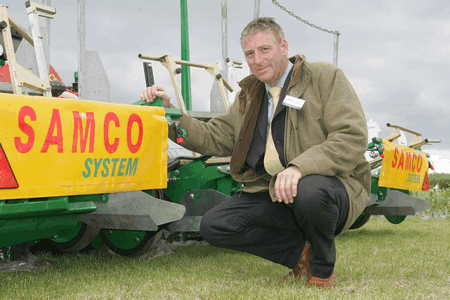Anaerobic digestion energy needs fresh look

As fossil fuel prices rocket, the opportunity for producing energy on farms by anaerobic digestion (AD) is something most growers should be investigating, says Jeremy Tomkinson of the National Non-Food Crops Centre.
He was launching a new computer calculator at Cereals 2008 to help farmers decide whether the idea is feasible, given their own circumstances, and if so to seek the not inconsiderable funding required.
“We can no longer regard anything that contains energy as waste,” said Dr Tomkinson. “We have never been in a better position to take full advantage of the carbon savings offered by renewable fuels and materials.”
There were many policy drivers and incentives (see box) to encourage such developments, but much confusion, he said. The new interactive tool – the outcome of a DEFRA-funded joint study with Andersons – aimed to address that.
“It allows you to see what capital expenditure you need, calculate the operational costs, assess the income and so work out your gross margin. Users can then go to the bank with a reasonable proposal,” he added.

Rob Wilkinson says sowing maize under palstic can boost yields
and provide an earlier entry for the following wheat crop
NFU non-food crop specialist Jonathan Scurlock said that, until about 18 months ago, he had been “quite sceptical” about the potential for AD on farms. But in the quickly changing energy and environmental climate, his opinion had changed.
Under new NVZ rules, many livestock farmers were likely to have to spend large sums simply to store slurry for extended periods.
“If you are going have to do that, why not go the whole hog and spend £750,000 on something that’s going to earn you money for years?” said Dr Scurlock.
The scope for arable farmers, too, to become involved was huge, said Benedikt von Thüngen of Renewable Zukunft. “In Germany there are 4,500 biogas units already and 1500 in Austria. In the UK there are just six or seven.”
Mr von Thüngen said maize was the most effective bio-energy crop to grow to feed AD digesters, creating gas to drive electricity generators and provide heat and even road fuel as methanol.
Slurry was not necessary, but just as cows thrived on varied diets, so the better the mix, the more efficient the AD process, he said.
Last year, with wheat at £150/t, while exploring the options for a 400ha (1000-acre) farm in Lincs, he said he had calculated that if it had switched to growing maize for producing biogas, its income would have at least doubled. “Wheat would have had to have been at least £328/t to be competitive.”
The project was postponed mainly because of lack of an electricity grid link, he said.
Energy security was a key driver for the EU, said Dorset farmer and Biogas Nord UK director Owen Yeatman, who was installing a biogas plant to add value to the output from his 400-cow dairy herd. “North Sea gas is running out and we’re now importing from Russia,” he added.
The capital costs of AD installations were substantial, Mr Yeatman acknowledged. “A 100kW starter plant would be about £450,000, excluding connection to the grid.”
But the recent doubling of Renewable Obligation Certificates support for AD made it a “new window of opportunity” farmers should explore.
Rob Wilkinson, whose firm RWA had been exploring AD technologies for four years, welcomed the ROC incentive. “But what we really need, like the Germans, is a guaranteed electricity price of about 12.5p/kW for 10 years to put us on a level playing field,” he said.
In the arable east, many growers were looking for a new and profitable break crop, he said. “Maize is the most energy-efficient and we know how to grow it.”
Sowing in March/April under degradable plastic allowed it to be harvested from the end of August, giving time to establish wheat. “It adds about £100/acre to the cost, but we get a 30% increase in yield – and you can still get your wheat in in time,” said Mr Wilkinson.
AD drivers:

